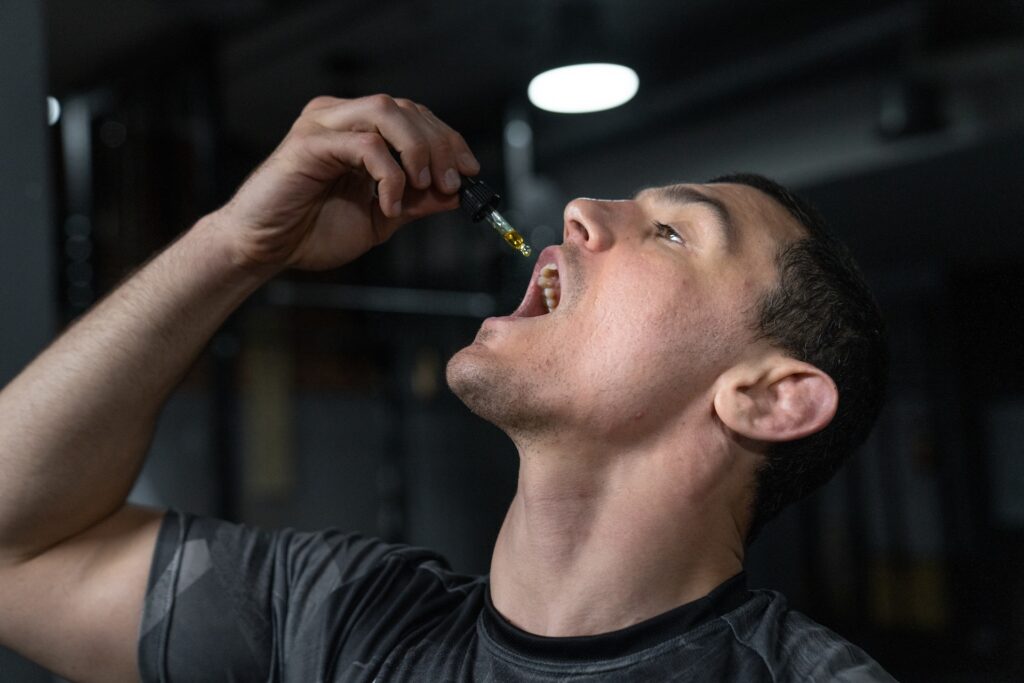A study on athletes and cannabis from Kent State University found that 93% of participants believed CBD aided in post-exercise recovery, with 87% feeling the same about THC. Ultimately, the results of the study show that both CBD and THC have the potential to deliver recovery benefits to athletes due to their analgesic, anti-inflammatory properties, and ability to improve sleep quality.
Athletes and Cannabis – Does it Aid in Recovery After Training?


A newly published study on athletes and cannabis, conducted by researchers at Kent State University, has set out to determine whether the use of cannabidiol (CBD) and/or delta-9-tetrahydrocannabinol (THC) “has the potential to enhance recovery after physical exertion.”
Study’s Purpose
The scientists stated that the athletes and cannabis study aimed to find out if people use CBD and/or THC for recovery after aerobic and/or strength exercises, as well as to understand other methods that might aid in recovery.
An anonymous survey covered 111 participants who “regularly used cannabis (CBD and/or THC) while also exercising.” Questions revolved around the extent of cannabis use, methods of consumption, exercise habits, recovery strategies, and demographic data.
“Eighty-five percent of participants in the athletes and cannabis study engaged in aerobic training. Likewise, the same percentage regularly did strength training. Seventy-two percent practiced both aerobic and strength training. Ninety-three percent felt that CBD helped them in recovery after workouts, while 87% had the same feelings for THC,” the researchers reported.
“Those regularly using cannabis, whether CBD or THC, and consistently exercising believe that cannabis helps them in recovery post-exertion. More data is needed to understand the role of cannabis in post-exercise recovery and the perceived benefits of its use by those regularly exercising and using cannabis,” they summarized.
Athletes and Cannabis
Even world-class athletes have long used cannabis, often preferring it over alcohol as it doesn’t result in a hangover. With changing cannabis regulations in the United States, professional sports leagues have also been adjusting their rules to accomodate athletes and cannabis.
NBA legend Kevin Durant revealed this summer that he personally urged league commissioner Adam Silver to lift the athletes and cannabis ban.
“I personally called him, urging him to remove cannabis from the list of banned substances,” said Durant, star of the Phoenix Suns, during a CNBC-organized conference.
The NBA and its players’ union earlier this year reached a new collective agreement that eliminated athletes and cannabis tests.
The researchers from Kent State University expressed that evolving norms and regulations regarding athletes and cannabis in the U.S. prompted their survey.
“Over the past decade, cannabis use has become more common in the U.S., both for medical and recreational purposes. In 2021, 52.5 million people in the U.S. admitted to using cannabis in the past year, accounting for 18.7% of the country’s population,” they wrote. “Cannabis plants consist of various cannabinoid compounds, mainly cannabidiol (CBD) and delta-9-tetrahydrocannabinol (THC), which bind to endocannabinoid receptors type 1 (CB1) and type 2 (CB2). Unlike THC, CBD doesn’t produce psychotropic effects. However, it’s shown to activate the parasympathetic system, leading to reduced heart rate, systolic blood pressure, and dilation of blood vessels. THC, on the other hand, increases sympathetic system activity, which results in increased heart rate, systolic blood pressure, and vasoconstriction.”
Athletes and Cannabis – Potential Benefits
The researchers noted that “both CBD and THC have the potential to enhance recovery after aerobic and strength exercises due to their analgesic, anti-inflammatory properties, and ability to improve sleep quality.”
“Both compounds have also helped in the perceptible reduction of pain in chronic pain patients, while a single intake of CBD has shown to mitigate muscle damage post strength training in regularly training men and women. Data from surveys among active sportspeople and athletes indicated that people use cannabis for post-exercise recovery, muscle pain relief, reducing inflammation, and improving sleep quality,” the athletes and cannabis research team added.
—
(Featured image by CRYSTALWEED cannabis via Unsplash)
DISCLAIMER: This article was written by a third-party contributor and does not reflect the opinion of Hemp.im, its management, staff, or its associates. Please review our disclaimer for more information.
This article may include forward-looking statements. These forward-looking statements generally are identified by the words “believe,” “project,” “estimate,” “become,” “plan,” “will,” and similar expressions. These forward-looking statements involve known and unknown risks as well as uncertainties, including those discussed in the following cautionary statements and elsewhere in this article and on this site. Although the company may believe that its expectations are based on reasonable assumptions, the actual results that the company may achieve may differ materially from any forward-looking statements, which reflect the opinions of the management of the company only as of the date hereof. Additionally, please make sure to read these important disclosures.
First published in Fakty Konopne, a third-party contributor translated and adapted the article from the original. In case of discrepancy, the original will prevail.
Although we made reasonable efforts to provide accurate translations, some parts may be incorrect. Hemp.im assumes no responsibility for errors, omissions or ambiguities in the translations provided on this website. Any person or entity relying on translated content does so at their own risk. Hemp.im is not responsible for losses caused by such reliance on the accuracy or reliability of translated information. If you wish to report an error or inaccuracy in the translation, we encourage you to contact us.



Comments are closed for this post.